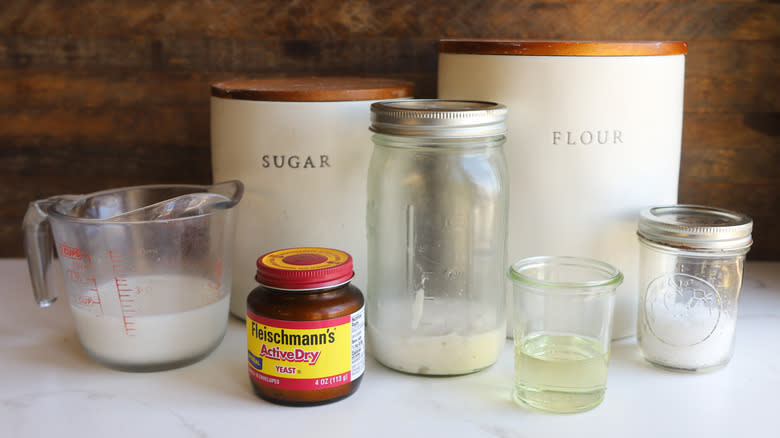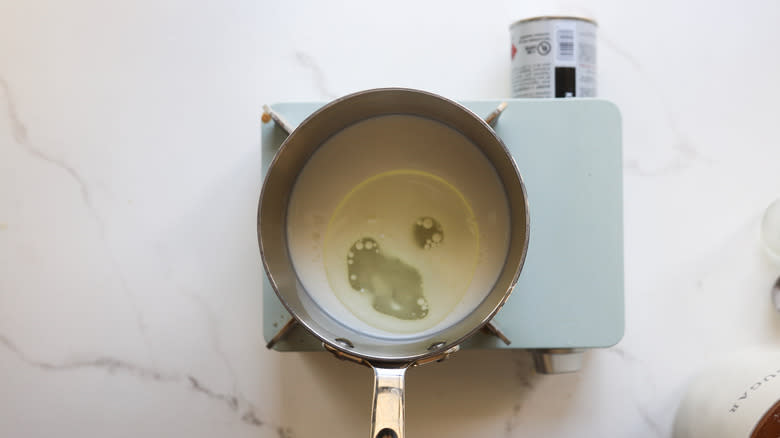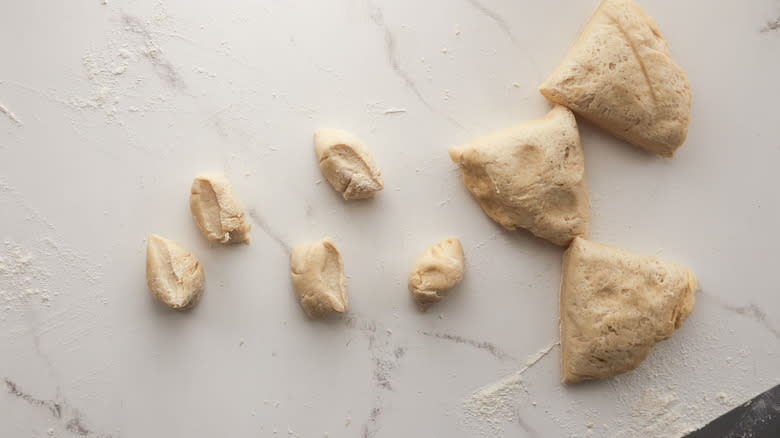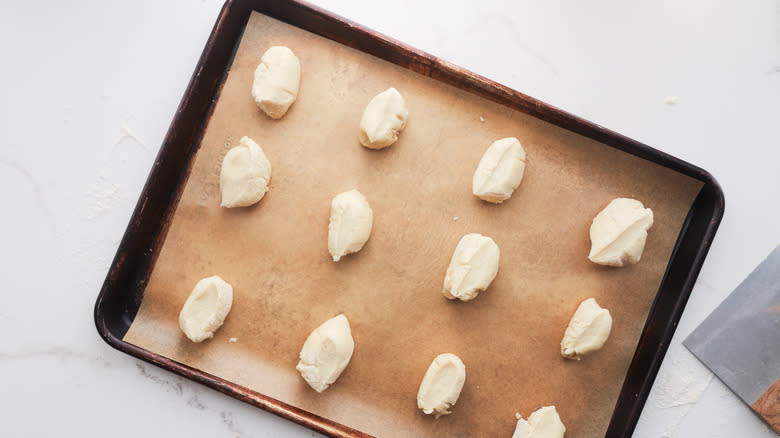Sourdough Pandesal (Filipino Rolls) Recipe

Pandesal, from the Spanish words "pan de sal" which translates to "bread of salt", is an iconic Filipino bread roll, beloved and eaten by millions across the archipelago every morning. This humble bun, often lightly dusted with breadcrumbs, has its roots in the colonial era when the Spanish introduced bread-making techniques to the Philippines. Over the centuries, it has evolved to suit the Filipino palate, transitioning from a harder, crustier roll to the slightly sweet, fluffy variant that is popular today.
The essence of pandesal lies not just in its taste, but in its cultural context; it evokes memories of dawn, with the familiar honk of the local "panadero" or bread vendor cycling through neighborhoods, and the comforting scent of freshly baked bread wafting through homes. Given the dynamic nature of culinary traditions, a delightful adaptation of this classic is the sourdough pandesal. This version utilizes the natural fermentation of a sourdough starter, imparting a tangy depth of flavor and a chewy, airy texture to the rolls. Recipe developer Taylor Murray recalls this favorite from her childhood: "My grandmother was born in Manila and she brought back a recipe for pandesal that is very near and dear to my heart. I worked on this recipe to include sourdough starter because I love that tangy flavor."
Read more: Bread Baking Mistakes Everyone Makes
Gather The Ingredients For Pandesal

Like all breads, the foundational ingredient for pandesal is flour. This should be regular, all-purpose flour. Traditional pandesal is also made with sugar and a bit of salt (hence the name pandesal which translates to "bread with salt"). For hydration, pandesal recipes use a mixture of oil and milk (though sometimes water is also used) to keep the dough soft and fluffy. For leavening, this particular recipe is going to use a combination of active dry yeast and sourdough starter. The yeast is there to do the heavy lifting of leavening the dough, and the sourdough is mostly there for flavor. A noticeably absent ingredient are the breadcrumbs, which are commonly seen on pandesal. While they do add a nice texture, they are not strictly required so have been left out of this recipe.
Warm The Milk

In a small pot, add the milk, oil, and sugar. Heat until just warm, about 100 F will do. Any hotter and you risk killing the yeast. Any cooler and the yeast may not activate. If you need to, use a thermometer to make sure that the liquid is just the right temperature before proceeding to the next step.
Dissolve The Yeast

Add the yeast and the sourdough starter to the pot and whisk until fully dissolved. The sourdough starter may take some time to fully incorporate into the milk. While some bread recipes don't require you to dissolve the yeast in the liquid before adding in the flour, it can help the yeast activate fully and ensures a more predictable outcome.
Add To Flour And Knead

In a large bowl, whisk together the flour and salt. Pour in the milk mixture and knead until a soft ball of dough forms. If the dough feels overly dry, you can add a few drops of water and continue kneading until soft. Rub a large bowl with oil and transfer the ball of dough to the bowl. Cover with a towel and let rise until doubled in size and airy, about 1 to 2 hours. The exact timing of proofing dough depends a lot on temperature, humidity, and the activity of the yeast and starter used in the recipe. The dough may take longer to proof on a cold day than it would on a warm day sitting on a warm oven. Check the dough often to get a feel for how it is progressing.
Shape The Dough

When the dough is done proofing, preheat your oven to 425 F. It's important to make sure that your oven is preheated fully before baking so you don't risk skewing the results. Turn the dough out onto a floured surface. Cut it into four equal portions using a bench scraper. Take one portion and roll it into a log roughly 10 inches long. Cut each long into pieces 1-1/2 inches long (should be about 5 pieces). Cutting the log this way is what gives pandesal its signature look.
Proof And Bake

Line a rimmed baking sheet with parchment paper. Depending on the amount of rolls you cut, you may need two trays. Transfer the cut rolls to the tray and cover with a kitchen towel. Let rise for another hour or so until the rolls are light and have enlarged. Place the tray in the oven and bake until the rolls are golden brown and firm to the touch, about 15 minutes. Let cool slightly before eating. While pandesal can be eaten plain or smeared with butter, there are so many other ways to enjoy this delicious bread.
Pandesal is versatile, acting as a vessel for a range of fillings from cheese, cooked corned beef, and scrambled eggs, to canned fish, jams, peanut butter, and various deli-style fillings. It's also worth noting that while pandesal is best relished fresh, if it becomes slightly hard the following day, a brief stint in the toaster or microwave can rejuvenate its softness.
Sourdough Pandesal (Filipino Rolls) Recipe

Prep Time: 2h 40mCook Time: 15mYield: 16 RollsIngredients
? cup whole milk
? cup oil, plus some for oiling the bowl
1 tablespoon sugar
57 grams ripe sourdough starter (about ? cup)
1 teaspoon active dry yeast
3 cups all purpose flour
1 teaspoon salt
Directions
In a small pot over medium heat, warm the milk, oil, and sugar until the mixture reaches 100 F. Remove from heat.
Whisk in the starter and yeast until fully combined.
In a large bowl, whisk together the flour and salt. Add in the milk mixture and knead until a soft, sticky dough forms.
Transfer the dough to a greased bowl, cover, and let rise until doubled in size, 1-2 hours.
Heat oven to 425 F.
Divide dough into 4 equal portions and roll each portion into a 10 inch long log. Cut each log into 1-? inch long pieces.
Place the pieces cut side down on a rimmed baking sheet lined with parchment paper. Let rise again until doubled in size.
Bake until just starting to brown and firm on the outside, about 15 minutes.
Remove from oven and let cool slightly before eating.
Read the original article on Tasting Table.